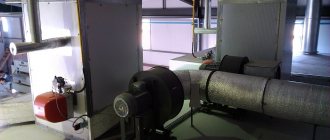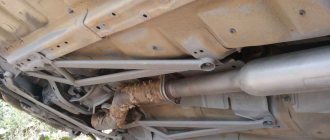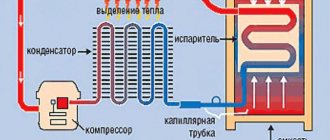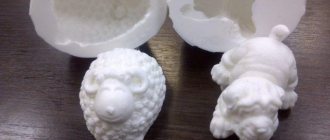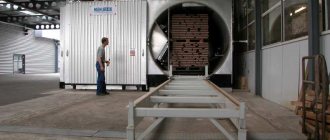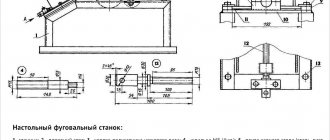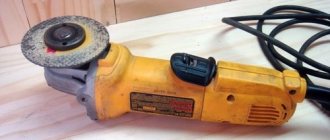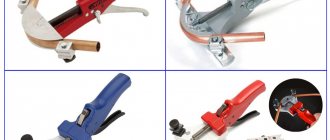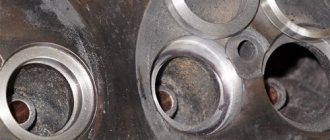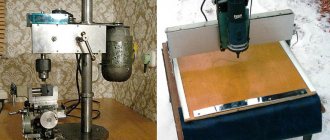A sandblasting chamber is a useful device that allows you to effectively and with the maximum degree of safety, using abrasive material, clean various surfaces from contamination, remove traces of corrosion and old coatings.
Ejector-type sandblasting chamber
Not only ordinary quartz sand, but also a number of other materials can be used as an abrasive powder, which is sprayed in such a chamber under high pressure:
- shot made of steel or cast iron;
- glass granules;
- electrocorundum;
- slag materials obtained after the production of copper and nickel (cooper slag and nickel slag).
Sand of various fractions
The choice of one or another abrasive material depends not only on the type of surface being treated, but also on what needs to be cleaned from it.
Factory-made sandblasting chambers: as we can see, there is nothing overly complicated in their design
Types of sandblasting chambers
There are two types of sandblasting chambers on sale – inhabited and uninhabited. The main characteristics and operating features of inhabited cameras are as follows:
- these are sealed rooms of a large area where the operator is located, processing the products,
- the walls inside are covered with soft shock-absorbing material that dampens abrasive ricochet,
- after hitting the surface of the product, the air-abrasive mixture, along with the destroyed particles and processing, falls onto the floor grate, from where it enters the collection and return device,
- the collected mass goes into a cyclone-type separator, is divided into waste and abrasive, which can be reused,
- dust and waste are transferred to a storage tank outside the chamber, and abrasive is transferred to a hopper for further use.
Uninhabited devices are smaller. In appearance, such a chamber is a rectangular cabinet into which the master inserts his hands through special holes and carries out all the necessary actions. Such devices process small-sized products, and they can be made with your own hands.
Principle of operation
Sandblasting chambers, which are called inhabited if the processing process is controlled by a specialist located outside them, many home craftsmen prefer to do with their own hands, as it is simple and profitable. The advantages of this approach also lie in the fact that self-manufacturing of such a chamber allows you to give it the dimensions and configuration that are optimally suited for processing products of a certain type. In this matter, the master who makes the sandblasting chamber has practically no restrictions: it can be either a small box for processing miniature products, or a whole hangar in which large-sized metal structures will be placed.
Operating principle of the sandblasting chamber
Even taking into account the fact that both industrial and self-assembled sandblasting chambers are safe, when working with them you should use protective equipment, which traditionally includes:
- respirator;
- work glasses;
- special closed clothing and shoes.
Processing the part in a sandblasting chamber
Sandblasting chambers, if manufactured correctly, in addition to versatility, provide the following advantages to the specialist working with them.
- Using such chambers, it is possible to sandblast products of almost any size and configuration.
- The entire processing process, performed using a special nozzle, can be monitored visually, which is ensured by a special viewing window.
Large viewing window provides good visibility
Design and principle of operation of the sandblasting chamber
A sandblasting machine helps solve a large number of problems. It cleans any surface - metal, wood, concrete, brick, it is only important to choose the right power of the device and the type of abrasive. After sandblasting, the service life of products increases, especially for metal. Using sandblasting, you can degrease surfaces, prepare them for further work, clean glass before decorating, matte products, and even artificially age their surface.
At home, small uninhabited chambers or tubeless pistols that work outdoors are usually used. It is unrealistic to equip a home or garage with an inhabitable chamber - this system is complex, expensive, and belongs to the industrial category.
The design of an uninhabited camera is simple. This is a metal cabinet with a beveled lid and a built-in viewing window. In the front wall there are 2 round holes with sealed cuffs into which the operator inserts his hands. There is a grate on the floor for pouring waste material. For ease of removal of abrasive, the lower part of the chamber is made in the shape of a truncated pyramid. The dust is drawn through the filter into the dust collector. Products are loaded into the chamber through a door on the side surface.
The operating principle of the camera is as follows:
- after turning on the compressor, the air in the unit is combined with the abrasive material,
- under high pressure the mixture is supplied to the surface of the product through the nozzle of the gun,
- the base is cleaned of dirt, plaque, coatings,
- bulk waste is supplied to containers intended for this purpose,
- the surface of the object is blown with air for final cleansing.
Depending on the type of sandblasting gun, air supply with abrasive can occur in different ways. If the gun is an injection gun, then sand and air go to the device through different hoses. When the gun is pressurized, air and abrasive are mixed in advance and directed into the nozzle one sleeve at a time. Due to their low cost and ease of use, injection systems are used much more often in uninhabited chambers.
How to buy a KSO sandblasting chamber. A price that's right
If you decide to buy sandblasting equipment, then price is not the only factor that should determine your choice. The most important thing is whether the purchased equipment will cope with the assigned tasks. We offer the following purchasing algorithm:
- Determine what surfaces you need to clean. For example, for parts with dimensions up to 1 meter, a KSO sandblasting chamber is suitable, for cleaning facades - a mobile DSG unit, for rolled metal - a shot-blasting chamber, and for large-sized products - a habitable chamber.
- Select installation performance. The sandblasting chamber is equipped with nozzles of different diameters, and the larger it is, the greater the number of square meters. meters per hour it will be possible to process, but you will also need a more powerful compressor.
- Determine the required sandblasting power. If you need to clean complex contamination, then choose a more powerful pressure-type sandblasting chamber; its price will be higher, but the productivity is several times greater than that of an injection chamber.
- Select compressor. It is the compressor that is the heart of the sandblasting chamber and brings it to work. It is impossible to use a sandblasting chamber without connecting to a sufficiently productive compressor station.
- Additional options. The price of a sandblasting chamber can increase by up to 50% depending on the choice of consumables, spare parts and auxiliary systems. For example, an increased capacity of an abrasive hopper, remote control keys, a sandblaster suit, nozzles and sleeves can increase the cost of the purchase, but without these components it will be impossible to work. And also in the future, the cost of purchasing, for example, a recovery system will help you save on abrasives and the absence of equipment downtime.
- Make a purchasing decision. Now, before you buy a sandblasting chamber, you can calculate whether this will be the most inexpensive solution. It may be cheaper to outsource the order
- Contact us. If it was not possible to calculate something from the previous points or figure it out on your own, then we will be happy to help and advise you.
To get advice, contact our manager in one of the following ways:
- By phone: 8-800-555-95-28 (free call)
- By email
- By filling out an application in our online chat.
Buy or make a homemade sandblasting chamber - which is better?
It is unrealistic to make an inhabited chamber yourself - this is only possible in a factory after careful design. The total cost of such installations starts from 1–1.5 million rubles; they include a housing made of steel or sandwich panels, a gateway with swing gates, grated flooring, complex ventilation, lighting, control systems, etc.
It is quite possible to make an uninhabited camera yourself, and it will work no worse than a purchased one. The feasibility depends on the availability of tools, materials, and accessories: if everything has to be purchased separately, it is easier to buy a ready-made camera in a specialized store.
Types of abrasive
The choice of abrasive material depends on what result you ultimately want to achieve and what type of surface you will be working with.
In pressure and injection type sandblasters, various types of abrasives are used: sand (must contain a high proportion of silicon), cast iron or steel shot.
In some cases, boron carbide is used. It is often used as a composite material in the production of sandblasting nozzles, and the residues in the form of waste have a structure similar to the structure of sand.
How to make a camera with your own hands
A small stationary camera will not take up much space; it can be stored and used in a garage or shed. Essentially, it is a box made of metal or other material, lined with metal more than 1 mm thick. It is best to place the finished camera on a table or other stand - this way it will be comfortable to work with it.
Work zone
The working area is the inner part of the chamber, closed during cleaning, into which the product is placed. There must be a mesh or grate on the floor of this area so that sand does not linger inside and fall through the bottom. The device must be equipped with a viewing window through which the operator can observe the process and evaluate the results.
Good lighting is planned at the top of the working area so that there are no dark areas left. The lamps must be closed, otherwise dust and sand will quickly damage all contacts. Inside the housing there are gloves attached with a clamp on the flange, as well as a sandblasting sleeve with a nozzle (in the pressure chamber) or a gun (in the injection chamber).
Cone bottom
The bottom must be large, otherwise the workings with abrasive will not be able to fit and will begin to layer and accumulate in slides. To easily remove waste, you need to provide unobstructed access to the bottom (it is most convenient to pour abrasive and dust into a regular bucket). If the chamber assumes the possibility of returning the mass, and its collection is carried out automatically, the bottom walls should be sloping.
Hood
The hood creates a vacuum of air and removes dust from the sandblasting chamber. It must be equipped, because part of the sand or other abrasive material, after hitting the surface of the product, is destroyed and turns into flying dust. To equip the hood, it is recommended to use an electric motor with a power of 0.3–0.75 kW with a bladed propeller.
Sandblasting machine
The basis of the entire system is the sandblasting unit itself, which processes various surfaces. The most common are injection guns that operate on a simple principle: compressed air is supplied separately from sand, and the latter flows by gravity from a separate container through its own hose. Typically, such devices are used to treat delicate surfaces - removing small dirt, frosting glass. The injection device will also remove a thick layer of paint and rust, but 3-4 times slower than a pressure device.
Pressure-type sandblasting machines have an air line divided into two parts: one goes into the container with abrasive, the second goes to the exit from it. After the sand is released under pressure, it is connected to a stream of compressed gas, and the acceleration of the particles will be maximum. With this processing, the speed of action is an order of magnitude higher.
General building
This section of the sandblasting installation connects the attachment parts, device control, and electrics. The holes for the arms should be located at a height convenient for the operator, and the distance between them should also be optimal. The most comfortable hole diameter is considered to be 10–12 cm, and this is the size of gloves that should be selected.
Sandblasting gloves must be strong and dense, because they will protect your hands from ricochet. To fasten them, it is better to choose flanges, which, after putting on gloves, are clamped with clamps. At the top of the common body there is an air damper through which clean air will flow.
Lighting
The lamps should illuminate the work area evenly so that all areas of the workpiece are clearly visible to the operator. To protect the lamps from impacts and dust, they are covered with a plastic casing on top, and to maintain transparency, a fine-mesh mesh is placed on the outside (the same device should be attached to the viewing window). Usually, two light bulbs are enough for high-quality lighting for an average-sized camera.
Buy a pressure chamber
Brands such as KSO (for example KSO-60-N, KSO-110-N-FVR-M, KSO-130-N-FVR-M, KSO-110-N-FVR with rotary) have proven themselves very well in the market of sandblasting chambers. table), ECO chambers (for example ECO-100P) and CAB pressure units (for example CAB-110PD, CAB-135PD, CAB-135PT)
As a rule (but not necessarily), the scope of delivery of the chambers includes nozzles, sandblasting sleeves and protective kits for workers. Some equipment includes abrasive recovery systems, as well as self-cleaning air filters. If this is not provided, you can always order everything from us at a favorable price.
To consult on any question regarding pressure-type sandblasting chambers, find out the current price or ask any other question, you can always write to us by email or call us 7 (495) 7677987.
We are confident that our offer will suit you, since we work directly only with reliable suppliers without intermediaries and on very favorable terms, which is reflected in the prices.
Recommendations for making a sandblasting chamber
Before you start creating a camera with your own hands, you need to develop its design and draw up a drawing. This will allow you to clarify the dimensions, purchase and measure materials correctly. The internal parameters of the device should not be made too large to avoid the effect of strong rebound and additional impacts of the abrasive on the product. If the chamber is still large, it is worth lining its walls from the inside with soft material, for example, rubber. Other tips for creating a sandblasting booth include:
- it is necessary to pay close attention to the quality of ventilation of the installation,
- to install the viewing window, it is advisable to purchase impact-resistant plastic, since simple glass will break quite quickly,
- It is recommended to lay a reinforced mesh at the bottom of the chamber, and place a strong chute under it for waste abrasive,
- To place any products in the chamber, including those with a non-standard shape, the sides should be covered with a tarpaulin and not made rigid.
Prices: differences between expensive and cheap sandblasting cabins
We will consider the dependence of cost on functionality using the example of several ejector models of jet cleaning chambers of the same type and direction: AE&T T06305, ECO-E-100S, ECO-100SF.
The internal dimensions of the ejector cabins AE&T T06305, ECO-E-100S, ECO-100SF are almost the same. The units have approximately the same productivity and are equipped with an abrasive gun, hoses, and lighting. This is where the identical sides end.
| Functional | Ejector stationary sandblasting chamber AE&T T06305 (inexpensive model) | Ejector cabin ECO-E-100S (mid-price segment model) | Ejector chamber ECO-100SF (expensive model) |
| Equipment | incomplete | incomplete | full |
| Steel/structure | thin | durable | durable |
| Abrasive recovery (automatic collection and subsequent use in the second round) | — | + | + |
| Cleaning abrasives from large flakes and contamination | — | + | + |
| Ventilation to suck dust out of the work area, filter to keep dust removed from the work area | — | — | + |
| Automatic dust filter cleaning | — | — | + |
| Filter for keeping dust removed from the working area | — | — | + |
| Sandblaster gloves (quality) | Low quality gloves | High quality seamless rubber gloves with cotton lining | High quality seamless rubber gloves with cotton lining |
| Work area lighting | Weak | good | good |
| Protection on walls and sight glass against shot ricochet | — | + | + |
| Description of functionality and suitability for work | The sandblasting cabin is empty and is not suitable for continuous continuous operation; it requires modifications and additional investments for further use. | The sandblasting cabin requires independent production of exhaust ventilation and a dust collection system. | The unit is ready for use and is suitable for installation indoors without additional modifications, including indoors where there are people without additional respiratory protection. |
Inexpensive cameras are empty, require additional investments and modifications to the installation, and are not suitable for continuous operation without stopping. Suitable for hobbies and amateur use in the garage. Medium options are suitable for both hobby and production, but will require modifications and investments. Fully equipped cameras are suitable for continuous production.
Selecting the device to buy
If you decide to purchase a camera ready-made, you should carefully consider its characteristics, type, and purpose. For periodic household cleaning of parts, you can buy an injection sandblaster; for a large volume of work, it is better to invest in a pressure chamber. When the device is to be used professionally, it is recommended to pay attention to pressure devices with automatic abrasive recovery.
The stronger and higher quality the materials used to make the device, the longer it will last, so there is no point in buying the cheapest models that can break after the first use. If you want to save money, you can still make a sandblasting chamber yourself - it will be quite enough for household needs, hobbies and repairs.
Advantages and types of sandblasting
Sandblasting as equipment has many advantages, among which are the following:
- smoothing, leveling the surface;
- cleaning hard-to-reach places and elements;
- high performance;
- high-quality surface preparation before applying paint, varnish or protective coating.
There are several types of sandblasters, two of which are commonly used for surface cleaning. These include closed-type and open-type sandblasting. The closed one is essentially a sandblasting chamber. Open type - mobile, mainly used when working with outdoor objects.
Sandblasting can also be of injection, pressure or vacuum type. They differ from each other in the way they supply abrasive particles to clean the surface.
INDUSTRIAL SHOT BLASTING CHAMBERS BLASTSE
We offer complex shot blasting equipment for production and supply.
These are specialized shot blasting chambers for blasting, removing the top layer, preparing surfaces before painting and other tasks. Using the manufactured stationary cleaning chambers, you can effectively, environmentally and economically clean rust, scale, and remove old paint from metal structures, parts, assemblies and mechanisms. Features of the construction quality of BlastSE stationary inhabited shot blasting chambers: production with European quality levels and in accordance with EU directives and CE standards. In manufacturing and creation, components, parts and materials from the world's leading manufacturers are used to ensure durable and economical operation, which ensures their long-term, trouble-free operation during intensive use.
We are implementing a production program for industrial shot blasting chambers with full availability of resources for design and execution in the production of diverse design solutions directly tailored to the technical needs of the customer and his financial and budgetary guidelines. The product line contains more than a hundred standard and atypical engineering developments with a wide range of implementations. Despite the vastness of this engineering scope, each client request is processed individually for maximum adaptability to the technological requirements and needs of the customer enterprise. Below are structurally presented references of only some of the typical designs for familiarization and attention to the high-tech potential and versatility of existing general technical engineering.
